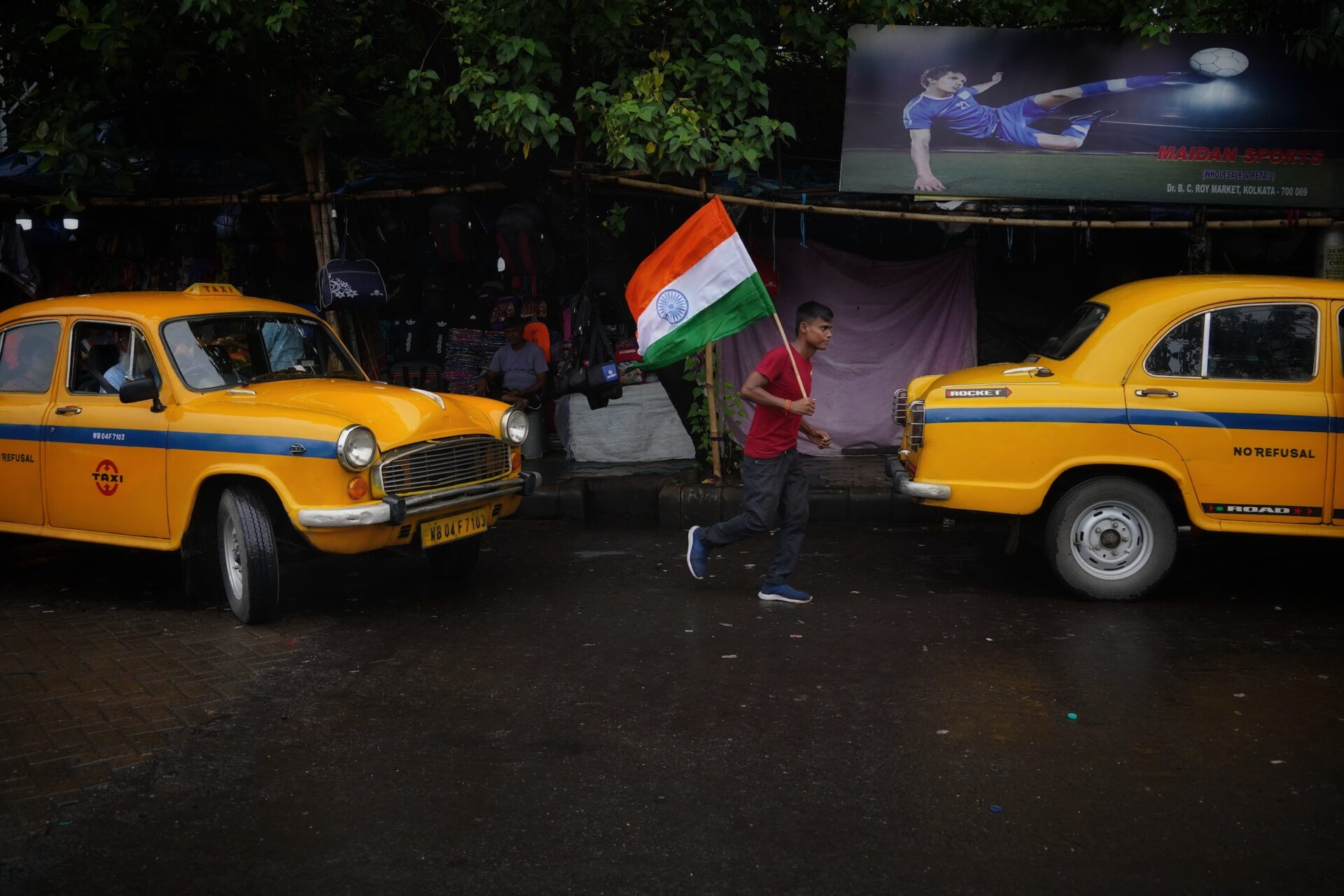Despite increased research and commentary, India’s Indo-Pacific security and foreign policy behavior remains puzzling. When I began studying India’s security conduct in the Indo-Pacific in 2013-2014, I was curious about India’s growing security cooperation with countries in Southeast Asia and East Asia.
Those were exciting times to begin researching the subject. New Delhi had officially recognized the concept of the “Indo-Pacific.” The China challenge had become more pronounced for New Delhi, compelling it to move closer to the West on specific issues. And Indian naval interactions with the Association of Southeast Asian Nations or ASEAN were expanding, with New Delhi projecting itself as a supplier of weapon systems to some Southeast Asian and East Asian countries.
All these developments indicated India’s growing security profile in the Indo-Pacific, but this was just a part of the story. In “India in the Indo-Pacific: Understanding India’s Security Orientation Towards Southeast and East Asia,” I explain the gradations in New Delhi’s security conduct and the dichotomies that shape it.
THE CONTRADICTIONS
There was consensus among many scholars and commentators that New Delhi’s security choices and actions in the region were driven by China’s assertive rise and the need to balance it in the region. As tempting as it was to categorize India as a balancer, as predicted by the theoretical tenets of neorealism, I was confronted by developments that contradicted the assumption. For example, despite better India-US ties, New Delhi remained against the idea of undertaking joint patrol with the United States in the South China Sea. Similarly, even as New Delhi was open to discussing the China threat behind closed doors with its Western counterparts, it was reluctant to appear to side with the West vis-à-vis China or criticize Beijing in joint statements overtly. Furthermore, India’s naval modernization suggested a desire to project soft power projection instead of building a force (that should be focused on submarines) that could challenge China in the region. Upon analyzing the arms/weapons supply data from India and China to Southeast Asian countries, it was apparent that India lagged far behind China.
As the world order changes, New Delhi is looking to maximize its interest and embrace a larger strategic and security role for itself.
New Delhi balanced many partnerships (some at odds with each other) ranging from the India-Japan-US trilateral arrangement to the Russia-India-China grouping. Such data points indicated that either New Delhi was not “truly” balancing China as predicted by theories or was simply an ineffective balancer. Some questions kept recurring during the initial research phase. The first was, if not to balance China, why is India expanding its security ties with countries in the Indo-Pacific? And second, why do Indian foreign and security policy declarations not always get reflected in its actions and choices?
As I delved deeper, I realized that neorealism’s balance of power logic could answer only a part of these questions. In other words, “something more” was needed to provide nuance to India’s geopolitical moves.
THE EVOLUTION
India’s approach to the outside world and its behavior in the regional and international system changed significantly after the Cold War. The loss of its strong strategic, security, and economic partner — the USSR — forced New Delhi to diversify its foreign relations. India’s non-alignment policy during the Cold War involved keeping extra-regional power away from its areas of interest, but post-1991 circumstances led the Indian leadership to reconsider its outlook and its roles. These changes were slow but eventually led to India transforming from a developing country to embracing more ambitious roles.
From the early 2000s, India self-identified as a “ major power” and, from 2014-2015, referred to itself as a “leading power.” Not only was the country experiencing unprecedented economic growth, but its interactions with the global economy expanded. As its economic footprint expanded, policymakers believed it was time for India to assume more active and aspiring roles. With greater self-confidence, New Delhi engaged several major and secondary powers concurrently, which came to be known as the multi-alignment policy. India’s desire was complemented by expectations of external actors leading to greater compatibility.
Many regional and extra-regional actors, including Southeast and East Asian countries, the United States, and its allies, found India to be an attractive economic partner. Washington was intrigued by India’s growing security profile in the Indian Ocean as it could act as a viable counter to China’s predominance and assertiveness in Asia. In short, the United States and its allies saw India as a “balancer,” but New Delhi envisaged larger roles for itself that went beyond the confines of a mere balancer to China in the Indo-Pacific.
India’s economic rise led to a maritime awakening because of the need to protect the sea lanes of communication, given the growing dependence on seaborne trade and energy imports. These factors led to greater defense budget allocation to the Indian Navy and guided India’s maritime conduct. Within the umbrella of the broader roles, supplementary (security) roles evolved with time — first responder for Humanitarian Aid and Disaster Relief Operations, net security provider in the Indian Ocean, and a stakeholder in the security of the Indo-Pacific.
India’s Act East Policy led to institutional and policy changes aimed at strengthening economic and strategic ties with Southeast Asia, East Asia, Oceania, and the Pacific Island Nations, aligning with its goal to become a major/leading power. To address the challenges posed by China’s assertive behavior, India sought greater security cooperation with regional and extra-regional countries, including the United States, Japan, Australia, Singapore, Vietnam, the Philippines, and Indonesia. These developments signify India’s rising security profile, Indo-Pacific engagement, and growing proximity to the West and its allies.
THE LIMITATIONS
Despite aspiration for more ambitious strategic and security roles, some challenges limit the translation of India’s stated foreign policy (or declared roles) into actual policy conduct. India’s policymakers encounter challenges when allocating resources to address external security priorities and developmental needs at home. The security role is particularly complex, as there is a civil-military divide on how to best implement it in the region. Furthermore, the competition between continental priorities (vis-à-vis Pakistan and China) and maritime outlook exacerbates the challenge, and turf wars between the armed forces reflect this. India’s military-industrial complex also faces structural weaknesses, and therefore, there is limited domestic ability to produce defense equipment even as the security roles are expanding.
Indian policymakers face international challenges as the country’s interactions with external countries are complex. While India’s role aligns with the expectations of actors such as the United States, Japan, and ASEAN countries, there are also divergences and differences in tackling the China challenge. Despite ongoing conflicts with China over border disputes, there are areas of cooperation, including economic partnership and climate change.
Overall, India partners with many countries at odds with each other and wishes to be a friend to many and not an (overt) enemy to any. It remains wary of the “all in” security approach followed by the United States, leading to challenges in their bilateral or multilateral relations. Finally, India’s age-old desire to jealously guard its idea of strategic or decisional autonomy complicates the situation further, especially with the West. Additionally, the lack of consensus among ASEAN members on India’s security functions in the region limits its ability to act as a security actor, resulting in a discrepancy between talk and action.
When countries change or expand their roles, the evolution is hardly linear or simple. It is fraught with complexity and chaos, at least until things stabilize. As the world order changes, New Delhi is looking to maximize its interest and embrace a larger strategic and security role for itself. While researching, I learned that multiple priorities compete given the limited fiscal resources, and domestic structural weaknesses impede a country’s ambitious desires. Additionally, bilateral and multilateral relationships are not always smooth, and there are areas of convergences and divergences between friends and foes, making it difficult to make a clear-cut, black-and-white decision.
Even as the changing balance of power may be crucial to understand some parts of a country’s external security actions and choices, policymakers face many other internal and external challenges that determine how a particular country conducts itself externally. This was true for India and, perhaps, for many other countries.





















